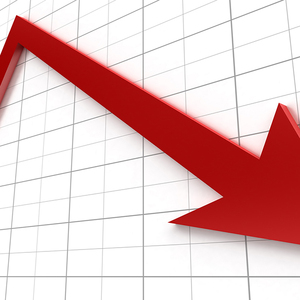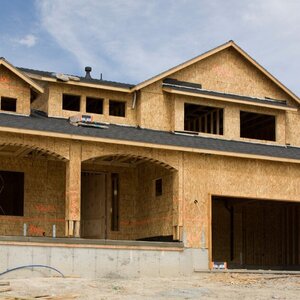The WPJ
THE WORLD PROPERTY JOURNALReal Estate Facts Not Fiction
Residential Real Estate News
New-Home Sales Rise Marginally in August
Residential News » Residential Real Estate Edition | By Michael Gerrity | September 25, 2009 6:00 PM ET
(News Source: National Association of Home Builders)
(WASHINGTON, D.C.) -- Following four months of solid gains, sales of newly built, single-family homes edged up by less than one percent in August as the window for an important buyer incentive began to close, according to data released by the U.S. Commerce Department today. Sales posted a meager 0.7 percent gain to a seasonally adjusted, annual rate of 429,000 units for the month.
"With the $8,000 home buyer tax credit set to expire at the end of November, prospects for being able to purchase a newly built home and have that transaction completed in time to take advantage of the credit dimmed considerably as of August," said National Association of Home Builders (NAHB) Chairman Joe Robson, a home builder from Tulsa, Okla. "Congress must take immediate action to extend the tax credit if the positive momentum in home sales is to continue so that a sustained housing and economic recovery can take hold."
"One very positive aspect of today's report was the continued decline in the inventory of new homes for sale," noted NAHB Chief Economist David Crowe. "The inventory declined for a 28th consecutive month in August, to 262,000 units, bringing us down to a 7-month supply at the current sales pace. That said, the fact that builders are not adding to their standing inventory indicates their concerns about what happens to buyer demand once the tax credit expires, and is also directly tied to the extreme lack of housing production credit that continues to weigh down the industry and stifle its potential as an engine of economic growth."
NAHB is calling on Congress to extend the first-time buyer tax credit for another year and to offer it to all income-eligible buyers of primary residences. In addition, NAHB is urging Congress to help eliminate the credit crunch, correct faulty appraisal practices and expand Net Operating Loss tax provisions that can help avoid more layoffs.
On a regional basis, new-home sales were somewhat mixed in August. A 12 percent gain in the West was entirely responsible for pushing the overall number upward, while the South posted no change from the previous month and the Northeast and Midwest each recorded declines, of 16.3 percent and 5.8 percent, respectively.
Sign Up Free | The WPJ Weekly Newsletter
Relevant real estate news.
Actionable market intelligence.
Right to your inbox every week.
Real Estate Listings Showcase
Related News Stories
Residential Real Estate Headlines
- Orlando's Housing Market Continues to Slow Down This Fall
- U.S. Mortgage Originations Predicted to Hit $1.95 Trillion in 2024
- Construction Input Costs in America Uptick in September
- Global Home Price Growth Further Slows in Mid-2023
- Home Values in U.S. Begin to Slip Late Summer
- Foreclosure Filings in U.S. Spike 34 Percent Annually in Q3
- U.S. Mortgage Credit Availability Upticks in September
- Retail Market is a Bright Spot for Manhattan Real Estate
- Residential Rents in U.S. Dip in September Amid Growing Apartment Supply
- U.S. Mortgage Rates Continue to Surge in October
- Greater Las Vegas Home Sales Down 10 Percent Annually in September
- Most U.S. Homebuyers Say Buying a Home is More Stressful Than Dating in 2023
- Mortgage Applications Dive 6 Percent Last Week in America
- Despite Peak Interest Rates, Global Housing Markets Improved in Q2
- U.S. Architecture Billings Index Reports Softening Business Conditions in August
- U.S. Home Price Growth Pace Upticks Again in August
- 10,000 Residential Properties Have Negative Equity in Hong Kong
- U.S. Pending Home Sales Dropped 7.1 Percent in August
- U.S. Mortgage Rates Reach Highest Level in 23 Years
- American Bankers See Weakening Credit Conditions Through End of 2024
- Palm Beach Area Residential Sales Uptick in August
- Driven by High Mortgage Rates, Pending Home Sales Drop 13% Annually in September
- Miami Area Residential Sales Slip 13 Percent Annually in August
- U.S. Home Sales Dip 15 Percent Annually in August
- Home Flipping Transactions Down in 2023, Profits Up
- U.S. Listings Inventory Rises 4 Percent in August
- The Fed Leaves Rates Alone for Now in September
- Mortgage Applications Uptick in U.S. Amid High Rates
- Single Family Rent Growth in U.S. Drops to 3-Year Low in July
- Greater Orlando Area Home Sales Down 16 Percent Annually in August
- Home Purchase Cancellations Accelerating in the U.S.
- U.S. Construction Input Costs Uptick in August
- U.S. Mortgage Credit Availability Upticks in August
- Monthly Property Foreclosure Activity Upticks in U.S.
- Greater Palm Beach Area Residential Sales Dip 5 Percent Annually in Mid-2023
- NAR Predicts Several U.S. Housing Market Outcomes
- Demand for U.S. Housing is Dropping as Prices Rise
- U.S. Homeowner Equity Decrease by $287 Billion Over the Last 12 Months
- 1 in 5 Millennials Think They'll Never Own a Home in America
- 1 in 8 San Francisco Home Sellers Is Losing Money at Closing in 2023
Reader Poll
Marketplace Links
This website uses cookies to improve user experience. By using our website you consent in accordance with our Cookie Policy. Read More





